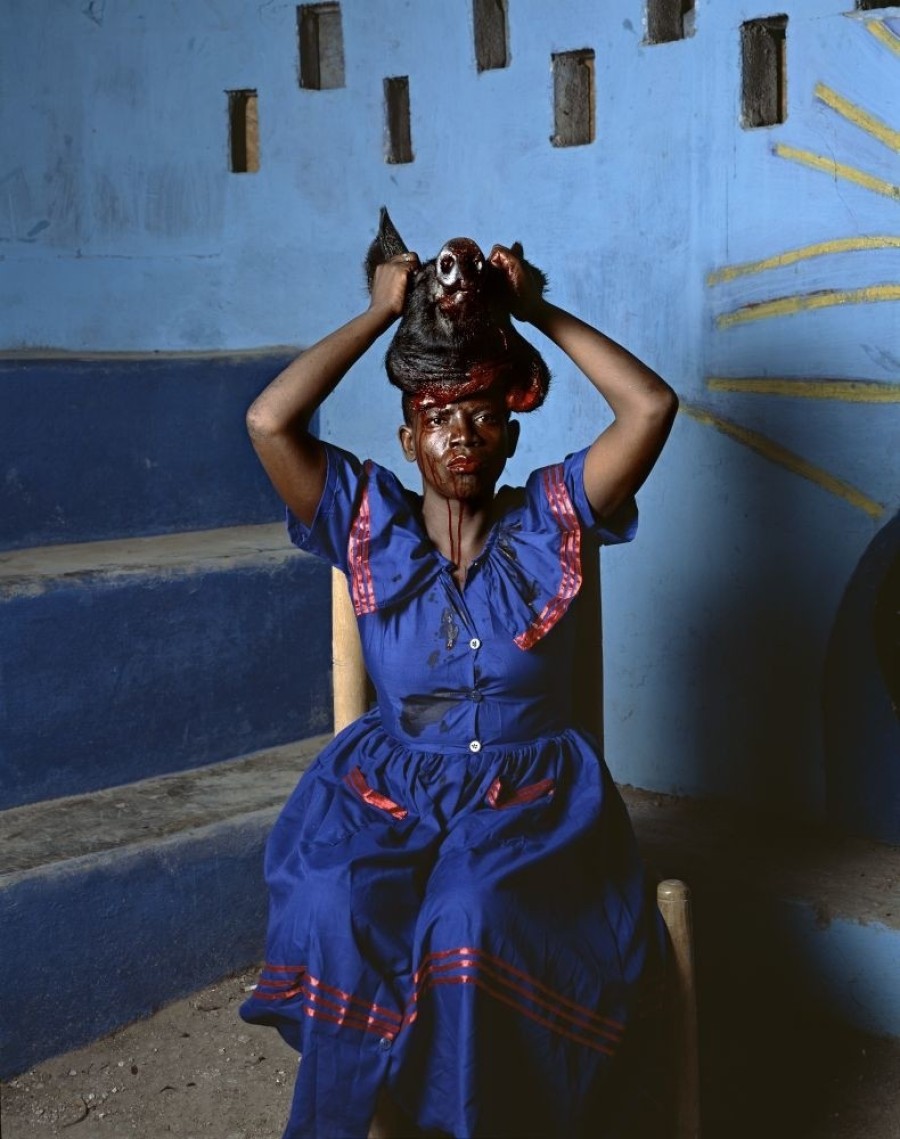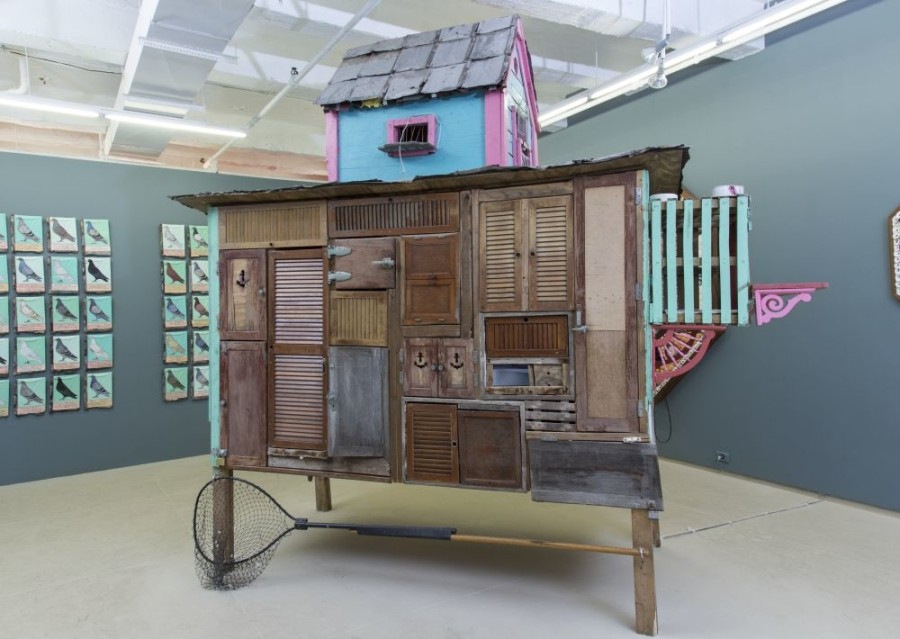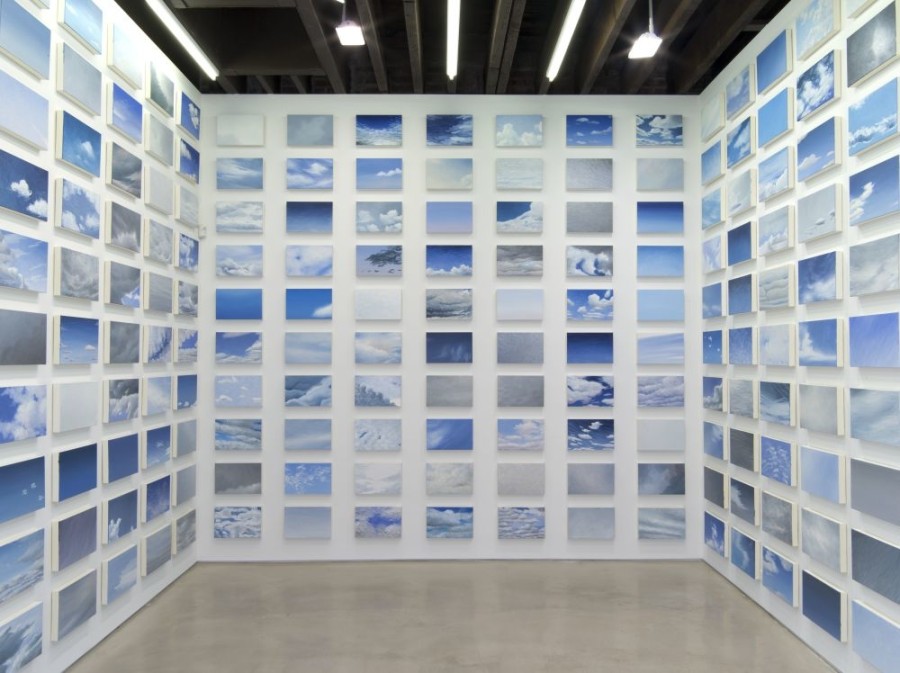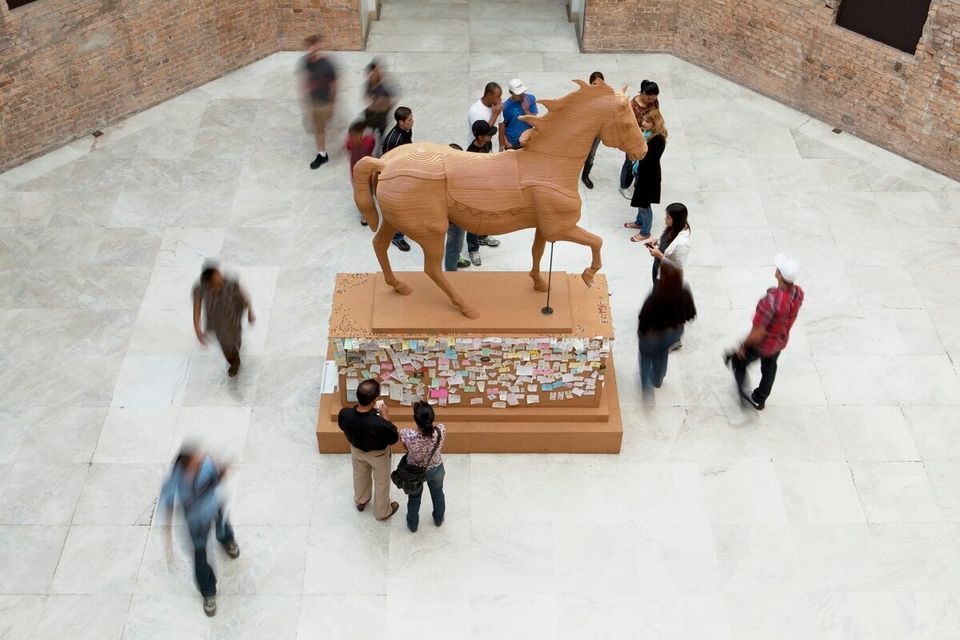At some point in recent history, the borough of Brooklyn transformed from Manhattan's affordable second fiddle to a creative capital in its own right. Like the city that never sleeps, Brooklyn's acquired its own artistic mythology as of late -- one rife with bohemian warehouses, communal studios, Dionysian nightlife, trendy coffee shops and their appropriate cult followings. But when you look beneath the hype, what does Brooklyn art actually look like today?
 Deana Lawson, As Above, So Below, 2013
Deana Lawson, As Above, So Below, 2013
The Brooklyn Museum's upcoming group show "Crossing Brooklyn: Art from Bushwick, Bed-Stuy, and Beyond" features 35 artists and collectives living and working in the borough. The exhibition spans media including drawings, paintings, photographs, sculptures, installations, videos, and performances as well as subject matters encompassing memory, geography, community, nostalgia and politics.
The works on view capture a range of perspectives and practices as diverse as the stories from which they come. Deana Lawson's confrontational yet strangely personal photographs, channeling African portraits, transform strangers into something familiar, while Duke Riley's multimedia pigeon coops are reassembled from the remains of a rooftop where individuals spent eight months breeding and training homing pigeons to transport illicit cigars from Cuba to Florida. Nina Katchadourian's "Topiary" comes from an ongoing project made by the artist entirely on airplanes.
Despite Brooklyn's freshly amplified presence in the cultural conversation, "Crossing Brooklyn" aims to capture a multigenerational view of the geographical space, revealing Brooklyn was a cultural powerhouse long before its reputation caught up to it. We reached out to curators Eugenie Tsai and Rujeko Hockley to discuss the challenge of portraying Brooklyn in a single art show and how exactly they set about doing so.
 Duke Riley, Pigeon Loft, 2012-13
Duke Riley, Pigeon Loft, 2012-13
Why a show about Brooklyn artists now?
Eugenie Tsai: We've always had a longterm commitment to showcasing the work of Brooklyn artists, recently with artists like Fred Tomaselli, Mickalene Thomas and Swoon. We also did a "Raw/Cooked" series of under the radar Brooklyn artists. Back in 1855, the first contemporary piece was purchased, by artist Asher B. Durand.
Rujeko Hockley: Durand was a contemporary living artist at that time. In the 1930s that became the Gallery of Living Artists, which in the 1980s became the Working in Brooklyn series. So this is really continuing something that's been around for a very long time.
How did you go about finding the artists?
RH: In June, the summer of 2013, we started doing studio visits, which were initially a selection of artists we were interested in, works we had seen, people that our colleagues and friends recommended. We started very organically and kept going from there, throughout the summer and into the fall. We ended up seeing more than a hundred artists.
Do you consider the exhibition a semi-cohesive portrait of Brooklyn -- or is it something else?
ET: We decided to take a particular take. It's not a comprehensive show -- it's impossible to do a comprehensive show. When we were making studio visits we found ourselves drawn to a particular kind of work, what we call an impulse, and that was artists whose work reached beyond the walls of the studio. Work that was expansive, not a kind of hermetic studio practice but a work that was engaged with the world. Now, there are many ways in which artists engage with the world, so we thought it might be nice to show a spectrum of possibilities. It doesn't pretend to be comprehensive, and it's a multigenerational show so it's not about the new, new, new or the young, young, young. It includes older Brooklyn and newer Brooklyn.
 Cynthia Daignault, I love you more than one more day
Cynthia Daignault, I love you more than one more day
Does the exhibition address any misconceptions about Brooklyn or Brooklyn art?
RH: I don't know if there are any misconceptions that we're addressing, but I think what really comes out is the breadth of Brooklyn, both literally in terms of geography -- how spread out across the borough they are in terms of their homes and studios -- but also the breadth of their output. There is a real spectrum of possibilities -- types of media, types of artists, types of interests. I guess the misconception that there would be one kind of Brooklyn artist.
Is there anything you can pinpoint as being fundamentally Brooklyn in comparison to Manhattan's artistic output, or is that too simplistic?
ET: Is there an essentialist Brooklyn art is like asking: is there essential women's art -- or an essential any kind of art. There is no essential Brooklyn-ness but Brooklyn happens to be a place where there is a lot of creative energy of all kinds. If anything, I think there is a spirit of experimentation and adventure. Artists know each other from all of these different connections. There are a lot of different creative people who live here and know each other, talk to each other, hang out with each other. But it's not about Brooklyn-ness.
RH: And that was true of Brooklyn for many years, even before the current vogue for all things Brooklyn. This is not a new phenomenon, per se. So many of the reasons artists came to Brooklyn was because it was affordable. It wasn't because Brooklyn offered something specific beyond studio space and the ability to do what you want to do. It's become a place of creativity because that was the set of conditions at one time.
ET: For quite some time, Brooklyn has been a kind of second best. You left Manhattan unwillingly to find affordable space in Brooklyn. And now Brooklyn has become an aspirational destination. It will be interesting to see how that affects artists and other producers of culture. The prices rise, people get priced out of where they are, where are they going to go? It's the issue of gentrification.
"Crossing Brooklyn" runs from October 3, 2014 until January 4, 2015 at the Brooklyn Museum in New York. A robust schedule of programming begins in conjunction with the exhibition, in an effort "to work with different entities outside of the museum to bring things into the gallery, to bring things outside of the gallery, to activate pieces that are in the gallery as objects," Hockley explained. See more work from the exhibition below.









